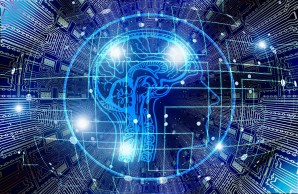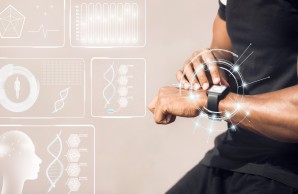Applied AI in Healthcare (AAI)
In the 'Applied AI in Healthcare' team, we strive to apply machine learning algorithms and "Deep Learning" models in clinical settings. Artificial intelligence, as we define it, encompasses methods that simulate human-like behavior for external observers.
In the specific sub-discipline of machine learning, our approach involves data analysis, constructing and adapting models that enable programs to "learn" through experience. We guide clinical projects benefiting from these methods from the early conceptual phase, providing advice on data collection and cleaning, to model development and critical evaluation. The foundation can be both routine medical diagnostics and study data, with a particular focus on classical tabular data and complex time series, such as sensor data or electronic health records.
In the Applied AI in Healthcare team, the generated algorithms and models are already seen as precursors to AI-based medical devices. Our focus remains on proximity to users in clinics, emphasizing the explainability of the models and their results (Explainable AI).
IAM-AI is a member of the
bAIome
.
Examples of currently running projects:
-
3D printing of pharmaceuticals and collection of sensor data using smart wearables
As the second most common degenerative disease of the nervous system, Parkinson's disease induces a great deal of suffering for those affected if left untreated. Our group is working on methods to support both them and those treating them in the complex adjustment of the necessary medication. The goal is an automated dosage recommendation for levodopa based on verifiable and measurable factors. The basis for this is continuous monitoring of motor symptoms using low-cost, widely available smart wearables. This approach promises several advantages over the current clinical reality:
- Direct interventions are possible when symptoms change. This can be done quickly and does not rely on subjective assessments of symptomatology that are not necessarily congruent. The use of transparent machine learning techniques promises to yield information that is applicable to non-apparatus diagnostics.
- Monitoring and adaptation can also occur away from the traditional clinical setting. In terms of telemedicine, patients can thus also be optimally cared for in their familiar home environment. This promises a significant improvement in quality of life, and not only in the case of limited mobility.
- By recording critical factors, optimized individual medication plans can also be predicted. Instead of having to rely on general population values, the individual circumstances of those affected can be taken into account from the outset.
We are currently working with our pharmaceutical partners in the hospital pharmacy to integrate the knowledge gained regarding optimal treatment into everyday clinical practice. Optimized dosage is envisaged for preparations produced individually by means of a 3D printer. Further information on this so-called "closed-loop system" can also be found on the hospital pharmacy website.
-
Merge cancer registry data and use it intelligently: AI-CARE
The Artificial Intelligence for CAncer REgistration and Research (AI CARE) project is a BMG-funded innovation project that was part of the call "Combining and intelligently using cancer registries". It addresses two questions:
1) Can the complex cancer registry data be processed, improved and merged using artificial intelligence (AI) methods in such a way that they are more accessible than before for oncological quality assurance and research?
2) How can evaluations of cancer registry data with AI methods meaningfully complement the classic evaluation spectrum of oncological health services research?
The collaborative project involves 13 partners, consisting of experts in cancer registration, medical informatics and artificial intelligence. It started on September 1, 2022 and will run for three years.
-
AI-assisted data mapping to OMOP
Mapping between different formats of Electronic Medical Records is a challenging task. Data types collected from individual studies are often very specific and not easily transferable to other data structures. This is a problem for tasks where comparisons/combinations with other data (studies) are required. The main solution is to harmonize data by using a common data model (CDM) like OMOP (Observational Medical Outcomes partnership).
However, existing solutions for displaying data into OMOP are not highly accurate, involve a lot of manual work, and are difficult in integrating into other processes. Furthermore, they are currently only applicable to data in English.
The current pilot project is based on a method used in one of these solutions, which is called TF-IDF (a method for finding matching values based on similar occurrences). We have extended it to be easily integrated, to work with different languages, and to allow more than one suggestion of mapping to OMOP concepts without any additional manual steps. Next, we will further improve accuracy using deep learning algorithms.



